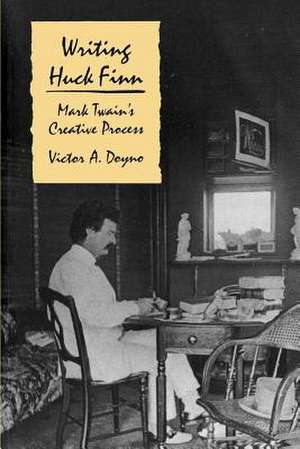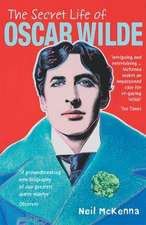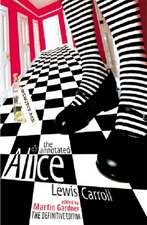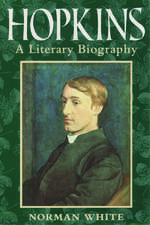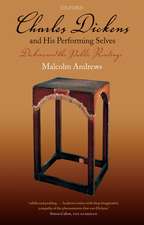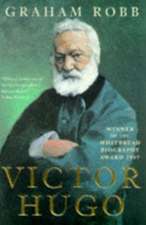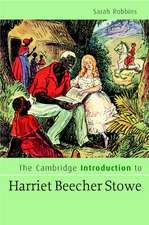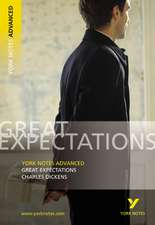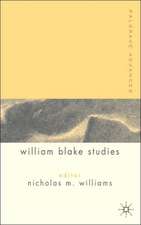Writing "Huck Finn" – Mark Twain`s Creative Process
Autor Victor A. Doynoen Limba Engleză Paperback – 31 dec 1991
Generations of readers have loved Twain's masterpiece but have been confused or vexed by the novel's ending. Doyno offers some surprising information about topics as varied as literacy, the economics of authorship, and the leasing of Black convicts. This information provides a new, coherent, and satisfying reading of the ending.
Although there have been several perceptive books about "Huckleberry Finn", none reveals so much about the composition process and about how Twain created his meanings. Creative writers will be fascinated to learn how Twain revised his work-in-progress to sustain the reader's interest, scholars of American literature will discover many new interpretations-- and all readers will gain new perspectives on this rewarding masterpiece and on the survival of our national literature.
Preț: 193.17 lei
Nou
Puncte Express: 290
Preț estimativ în valută:
36.98€ • 38.44$ • 30.66£
36.98€ • 38.44$ • 30.66£
Carte disponibilă
Livrare economică 16-30 ianuarie 25
Preluare comenzi: 021 569.72.76
Specificații
ISBN-13: 9780812214482
ISBN-10: 081221448X
Pagini: 292
Ilustrații: 1
Dimensiuni: 152 x 228 x 21 mm
Greutate: 0.43 kg
Editura: MT – University of Pennsylvania Press
Locul publicării:United States
ISBN-10: 081221448X
Pagini: 292
Ilustrații: 1
Dimensiuni: 152 x 228 x 21 mm
Greutate: 0.43 kg
Editura: MT – University of Pennsylvania Press
Locul publicării:United States
Textul de pe ultima copertă
In "Writing Huck Finn", Vic Doyno offers a new, accessible, and innovative approach to America's favorite novel. He presents new material from the revised manuscript of "Huckleberry Finn" and also draws upon Samuel Clemen's unpublished family journal, his correspondence, and his concerns about the lack of an international copyright law. Doyno focuses on Twain's creative artistry in stylistic matters, such as tone of voice, characterization, humor, plot, description, and imagery, using genetic criticism to reveal how the novel grew through creative revision. He also uses the evidence from the manuscript to explore new thematic interpretations about the role of nobility and religion in the novel.
Generations of readers have loved Twain's masterpiece but have been confused or vexed by the novel's ending. Doyno offers some surprising information about topics as varied as literacy, the economics of authorship, and the leasing of Black convicts. This information provides a new, coherent, and satisfying reading of the ending.
Although there have been several perceptive books about "Huckleberry Finn", none reveals so much about the composition process and about how Twain created his meanings. Creative writers will be fascinated to learn how Twain revised his work-in-progress to sustain the reader's interest, scholars of American literature will discover many new interpretations-- and all readers will gain new perspectives on this rewarding masterpiece and on the survival of our national literature.
Generations of readers have loved Twain's masterpiece but have been confused or vexed by the novel's ending. Doyno offers some surprising information about topics as varied as literacy, the economics of authorship, and the leasing of Black convicts. This information provides a new, coherent, and satisfying reading of the ending.
Although there have been several perceptive books about "Huckleberry Finn", none reveals so much about the composition process and about how Twain created his meanings. Creative writers will be fascinated to learn how Twain revised his work-in-progress to sustain the reader's interest, scholars of American literature will discover many new interpretations-- and all readers will gain new perspectives on this rewarding masterpiece and on the survival of our national literature.
